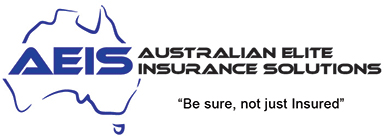You may be paying for insurance, but if you’re underinsured, you could be taking a big risk.
In the case of a disaster, you might have to pay the balance between the amount insured and the actual costs. For example, if the cost of replacing your building and contents is $4 million but they are insured for $3 million. In this scenario, if the building were destroyed by fire, you could be $1 million out of pocket.
Even if the cost to repair the damage is less than $3 million, your claim may not be fully reimbursed.
“Many insurance policies include a co-insurance clause,” says Michael White, Broker Technical Manager for Steadfast Group.
“This is triggered if you’re insured for less than the full value of the property. In very broad terms, it reduces the amount of the claim by the percentage by which you’re underinsured.”
So, with the example above, if the damage amounts to $2 million, you may not be reimbursed for the full cost of repairs.
How to find out whether you’re underinsured
To find out whether you have adequate cover, you can check your policy limit, which is the amount you’re covered for.
You can then compare this with the replacement cost of your building or other asset.
The Insurance Council of Australia provides free online calculators that may give you an idea of the replacement value of your property.
“These are just a guide, particularly if your building has any unusual features. A valuer will provide a much more accurate assessment of the value of your building and any other assets such as machinery covered by your policy,” White says.
What can you do if you think you’re underinsured?
Your broker can help you to identify everything your business depends on to operate and assist you to find the most appropriate cover.
“Every business is different, and your insurance should be tailored to your needs,” says White. “You need to be sure you’re not left vulnerable in certain areas or paying for cover you don’t need.”
Once you’re fully covered it’s often vital you review your insurance every year.
“Your business is evolving, and replacement costs are changing all the time,” says White. “For instance, a piece of machinery you bought four or five years ago might cost a lot more to replace than you paid, and your insurance needs to reflect that.”
Essential protection
Many small businesses are underinsured by accident. You may have misunderstood what’s needed, miscalculated the value of your assets, or underestimated how much your business has grown.
Or perhaps you’ve simply been so busy that checking your insurance cover slipped down your list of priorities.
It’s understandable, but it could also be disastrous if you don’t realise you’re underinsured until you make a claim.
The risk is you could lose everything you’ve worked so hard for, including your business. For peace of mind, talk to your broker about the best way to ensure you are not underinsured.
Important notice
This article is of a general nature only and does not take into account your specific objectives, financial situation or needs. It is also not financial advice, nor complete, so please discuss the full details with your Steadfast insurance broker as to whether these types of insurance are appropriate for you. Deductibles, exclusions and limits apply. You should consider any relevant Target Market Determination and Product Disclosure Statement in deciding whether to buy or renew these types of insurance. Various insurers issue these types of insurance and cover can differ between insurers.
For the original post, visit Steadfast


If you would like to discuss your insurances further, please feel free to contact us:
Click this link to book your free appt Book an appointment


Recent Comments